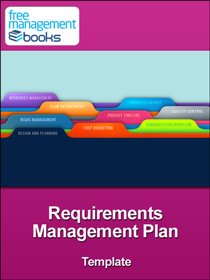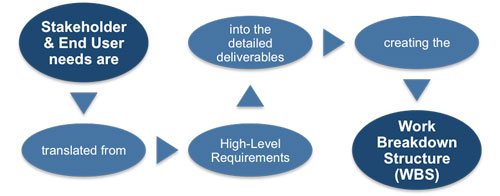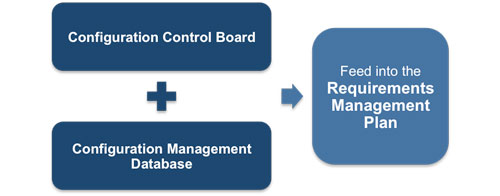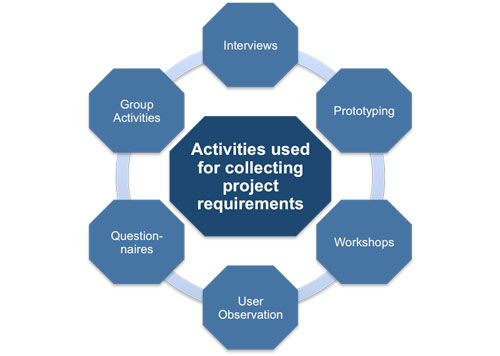
Requirements Management Plan Template
This template enables you to record and define all the project requirements whether they are product or project based. It provides a structured and documented framework that is fundamental to the management of project scope.
This plan defines how project requirements are collected, analyzed, monitored and managed. This document ensures that all requirements are recorded in a structured manner avoiding omissions and provides a tool to ensure the right requirements are available in a timely and appropriate fashion.
Projects are evolving entities and as such changes are inevitable and requirements must be well planned and managed so that these changes appear as seamless as possible to those in the project environment. There are several key documents that are essential to the understanding of a project’s requirements and how best to manage them to achieve success. They are:
• The project scope management plan
• The project charter
• The stakeholder register
• The stakeholder management plan
It is by translating the needs of the project’s sponsor, its stakeholders and end users/customers into requirements that enables the work breakdown structure (WBS) to be created and the project deliverables defined. The requirements management plan describes how the project requirements are taken from a high-level description to a detailed definition.

Requirements Management Plan Template
A prerequisite of the requirements plan is the project scope management plan. The latter includes the quantified and documented needs and expectations of the sponsor, customer and other stakeholders. It also describes how requirement activities will be planned and tracked. Key elements include:
- Methods to identify requirements
- How to analyze, prioritize, manage, and track changes to them
- Configuration management activities
- How changes will be initiated
- How impacts are analyzed
- Authority levels required to approve changes
- Product metrics that will be used and the rationale for using them
- Traceability structure to reflect which requirement attribute will be captured on the traceability matrix
Without such structure requirements can easily, or consciously be omitted from the plan causing severe, often irreparable damage to the overall success of the project. Many organizations will have their own methodology but it may need adapting to suit the nature of the project.
One of the critical responsibilities of the project manager is to make sure everyone on the project team adheres to the reporting structure defined in this plan. When team members provide accurate and up-to-date reports on the status of requirements issues and concerns will be highlighted enabling decisions to be made and any changes as the project progresses to be accommodated.
It is essential that the process for discussing and approving changes involves all individuals or groups that have a stake in the project and is coordinated with the configuration control board. The requirements management plan plays a key role in outlining the approach being taken for the managing the projects configuration and a key input into the configuration management database.

Inputs for Requirements Management Plan
A vital part of this plan is the evaluation and analysis of requirements and assigning a level of priority to each requirement so that if cuts or changes have to be made all those involved have a clear understanding of the practicalities entailed. Stakeholders have a major contribution to make in this process because they are unlikely to have a complete picture of the project’s impact, they will only be familiar with their own area or specialization. The constraints placed upon any project will form a key part of the decision making process because they highlight the impact of cuts in one area on other areas. For example, changes to the cost baseline will have effects on both the scope and timeframes of the project and it is only by reviewing the priority levels of requirements that acceptance or rejection of the change can be made. No decisions can be made in isolation.
Experienced project managers will use a variety of methods to collect all the requirements for their project. By employing these as early as possible in the planning of the project he or she will have the fullest understanding of the project requirements from the perspective of its stakeholders. This ability to reflect the opinions and needs of stakeholders in the defined project requirements enables greater acceptance of the project and its ultimate approval.

Collecting Requirements
Regardless of the method you use to collect your requirements for it to be an effective use of your time it is essential to carefully plan what you want to achieve and explain in concise terms what you want from participants. It is essential to guard against the tool becoming hijacked by individual concerns not connected with the project.
Initially project requirements will start out being described in high-level terms, becoming more detailed as knowledge and the project progresses. Requirements must be easily testable, traceable and measurable before they can form the necessary project baselines. They must also be consistent and acceptable to its stakeholders. The documentation generated in the collection of requirements must meet the needs of the organization, the project, its stakeholders, the chosen solution and any transition requirements. It must also detail any dependencies, assumptions or constraints for each requirement. This process of collecting requirements provides the basis for defining and managing the project scope along with the product scope.
